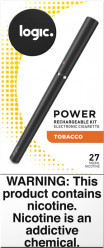
From tar-stained fingers to yellowed teeth, the visual impact of smoking on our appearance is undeniable. Yet, beyond these evident markers, lies another, more insidious effect – premature wrinkles. In this comprehensive look, we delve deep into the science behind how and why smoking leads to premature aging, accentuating wrinkles and other skin changes.
The Skin: An Outward Reflection of Internal Damage
Our skin is a dynamic organ that interacts with both our internal and external environments. A lit cigarette releases over 4,000 chemicals, many of which are harmful and have a deleterious effect on our skin’s structure and health.
The Four Pillars of Smoking-Induced Skin Aging

While the harms of smoking span a vast range, impacting nearly every system in the human body, its effects on the skin are particularly pronounced. Here’s a deeper look into how smoking ravages our skin:
1. Reduction in Oxygen Supply: The Constriction Conundrum
Every time someone inhales from a cigarette, a cascade of physiological reactions takes place. Among the most immediate is the constriction or narrowing of blood vessels. Nicotine, a primary component of tobacco, acts as a vasoconstrictor, causing small blood vessels, including those in the outermost layers of the skin, to tighten up.
This diminished blood flow is detrimental for several reasons. First, blood carries essential nutrients that the skin cells need for repair and rejuvenation. Moreover, oxygen is vital for cellular metabolism and overall skin health. With constricted vessels, there’s a significant reduction in the amount of oxygen that reaches skin cells. Over time, this chronic oxygen deprivation translates to a skin appearance that is dull, lifeless, and pallid.
2. Free Radical Rampage: The Invisible Assault
Cigarette smoke is a potent cocktail of harmful chemicals, and many of these give rise to free radicals. These are highly reactive molecules that, in their quest for stability, snatch electrons from other molecules, including those in skin cells. This creates a domino effect of damage at the cellular level.
Collagen and elastin, the skin’s primary structural proteins, aren’t immune to this onslaught. When free radicals target these proteins, the damage manifests externally as reduced elasticity and resilience. Consequently, the skin loses its plumpness, suppleness, and begins to sag, setting the stage for premature wrinkles.
3. Vitamin A Depletion: The Silent Sabotage
Vitamin A, and its derivatives known as retinoids, are cornerstone elements in skin health. They influence processes such as cell growth, differentiation, and even play a role in the skin’s immune responses. But smoking introduces chemicals that interfere with the skin’s ability to produce and utilize vitamin A.
With reduced vitamin A, the skin’s regenerative powers wane. This compromises the skin’s ability to defend against external aggressors like UV radiation and pollutants. As a result, the skin becomes more susceptible to damage, and its ability to repair itself is hampered, leading to an accelerated aging process.
4. Facial Muscle Overuse: Etching Wrinkles with Repetition
While less molecular in nature, the repeated physical actions associated with smoking play a notable role in skin aging. The regular pursing of lips when inhaling and the frequent squinting to prevent smoke from entering the eyes lead to repetitive muscle movements. Just like folding paper repeatedly at the same spot leads to a visible crease, these repetitive facial motions cause lines and wrinkles to become more pronounced over time, especially around the mouth and eyes. The skin, with its already compromised elasticity due to smoking, is less able to bounce back, making these wrinkles even more pronounced.
Reversing the Clock? Mitigating the Effects
While it’s true that some damage from smoking is irreversible, quitting can halt further deterioration. Here’s what one can do post-quitting:
- Rehydrate: Smoking dehydrates the skin. Drinking plenty of water and using a good moisturizer can help restore skin hydration.
- Rich in Antioxidants: Consuming foods rich in antioxidants can combat free radical damage. Think berries, nuts, and green vegetables.
- Professional Treatments: Consider professional skincare treatments like chemical peels or laser resurfacing, which can diminish the appearance of smoking-induced wrinkles and improve skin texture.
The evidence is unequivocal when addressing the question, “Does smoking cause wrinkles?” The deleterious effects of smoking on the skin, ranging from oxygen deprivation to free radical damage, conclusively point to smoking as a significant contributor to premature skin aging and the development of wrinkles. For those concerned about maintaining youthful and healthy skin, steering clear of tobacco products is imperative.
How do your smoking behaviors and the chemicals in combustible cigarettes also contribute?
Toxins from the chemicals in combustible cigarettes damage collagen and elastin, which are the fibrous components of your skin that keep it firm. Without them, your skin becomes hardened, leading to more wrinkles and the onset of premature aging.
While the development of wrinkles will be more prominent on your face, since smoking combustible cigarettes cause your blood vessels to narrow (limiting the amount of oxygen your skin gets), increasing the production of free radicals, and lowering the levels of vitamin A in the skin, you may also notice sagging skin in other areas around your body.
These same factors may also result in a decreased ability for your body to repair cuts and scrapes, which increases skin scarring. Since the damage to your skin from smoking combustible cigarettes is irreversible, you should add skin damage to your ever-growing list of reasons to quit smoking today!
What’s the best e-cig to quit smoking?
Switching to e-cigs allows you to fulfill your physical and mental dependencies to nicotine while freeing yourself from the harmful chemicals ingredients that make up combustible cigarettes. With the choice to lower your nicotine levels over time, your skin will thank you!
The best e-cig to quit smoking is your choice of Logic product. With the option to vape a 2.4% disposable e-cig and the choice between 2.4% and 1.8% nicotine in the rechargeable units, ex-smokers are equipped with a device that looks, feels, tastes, and operates in a similar way to their past smoking routine.
Was the opportunity to improve your skin a reason that you quit smoking? Drop a comment below to start a conversation.







